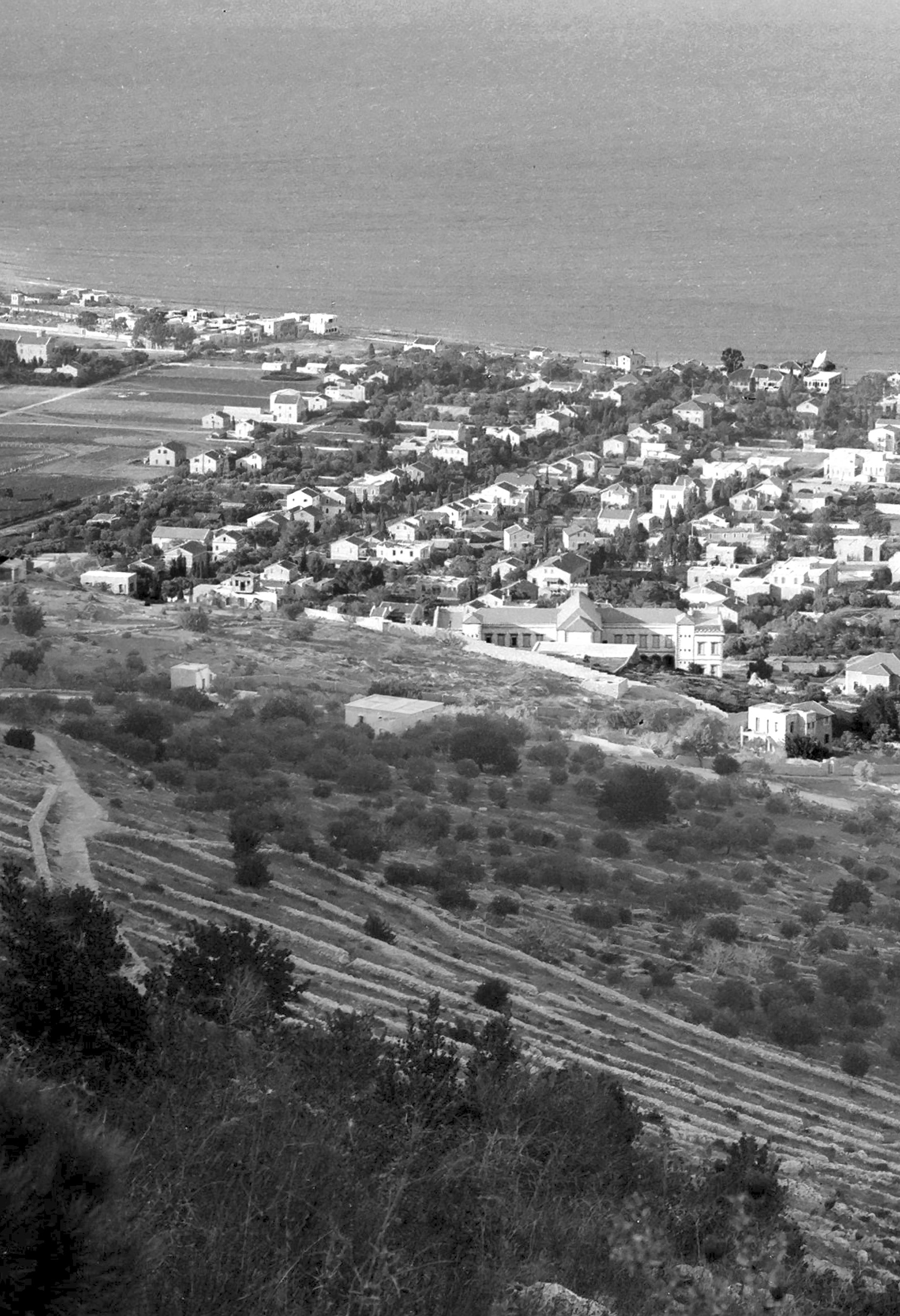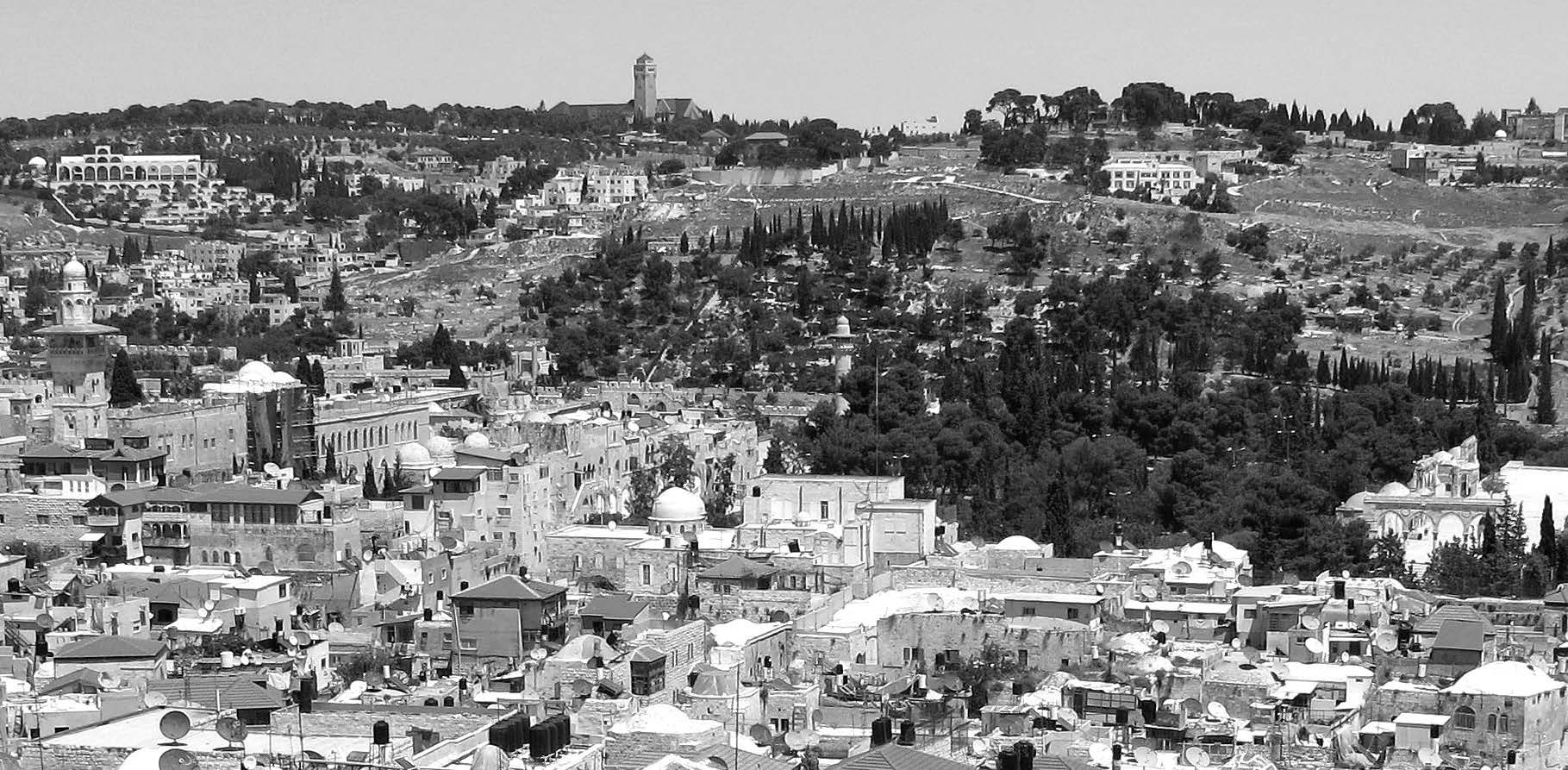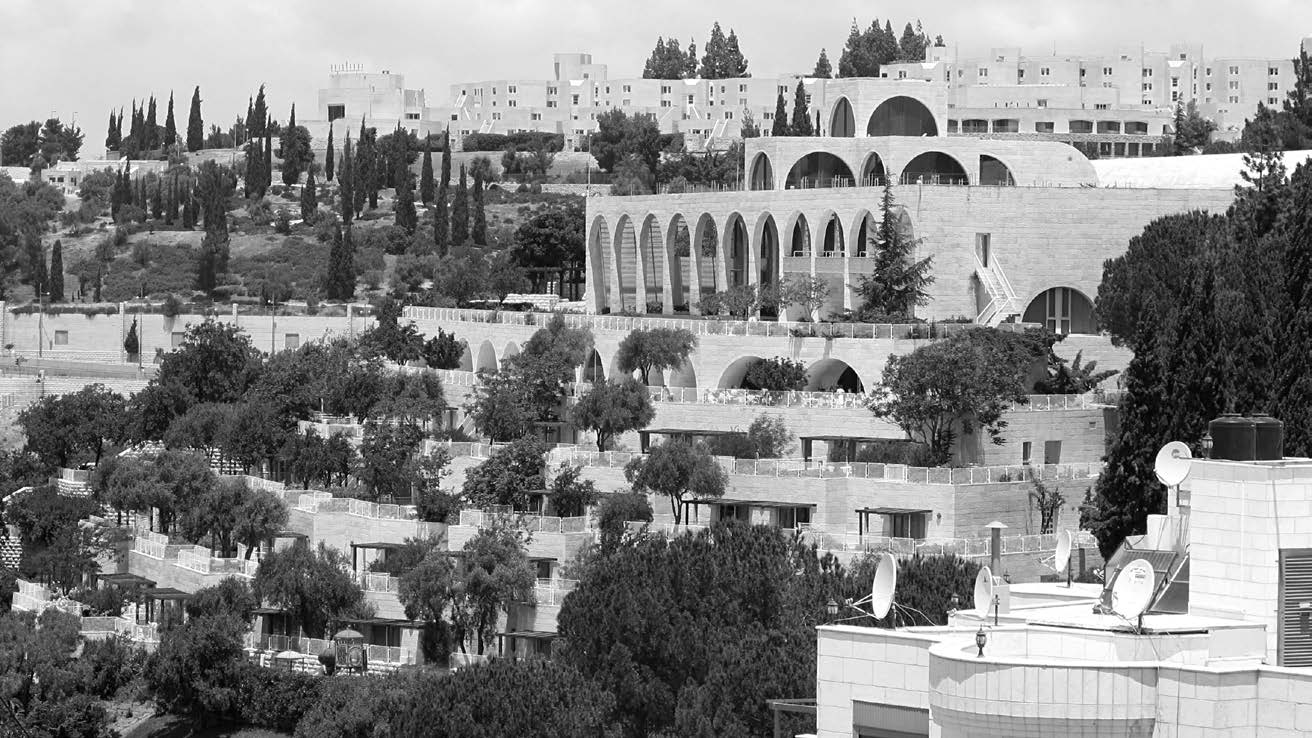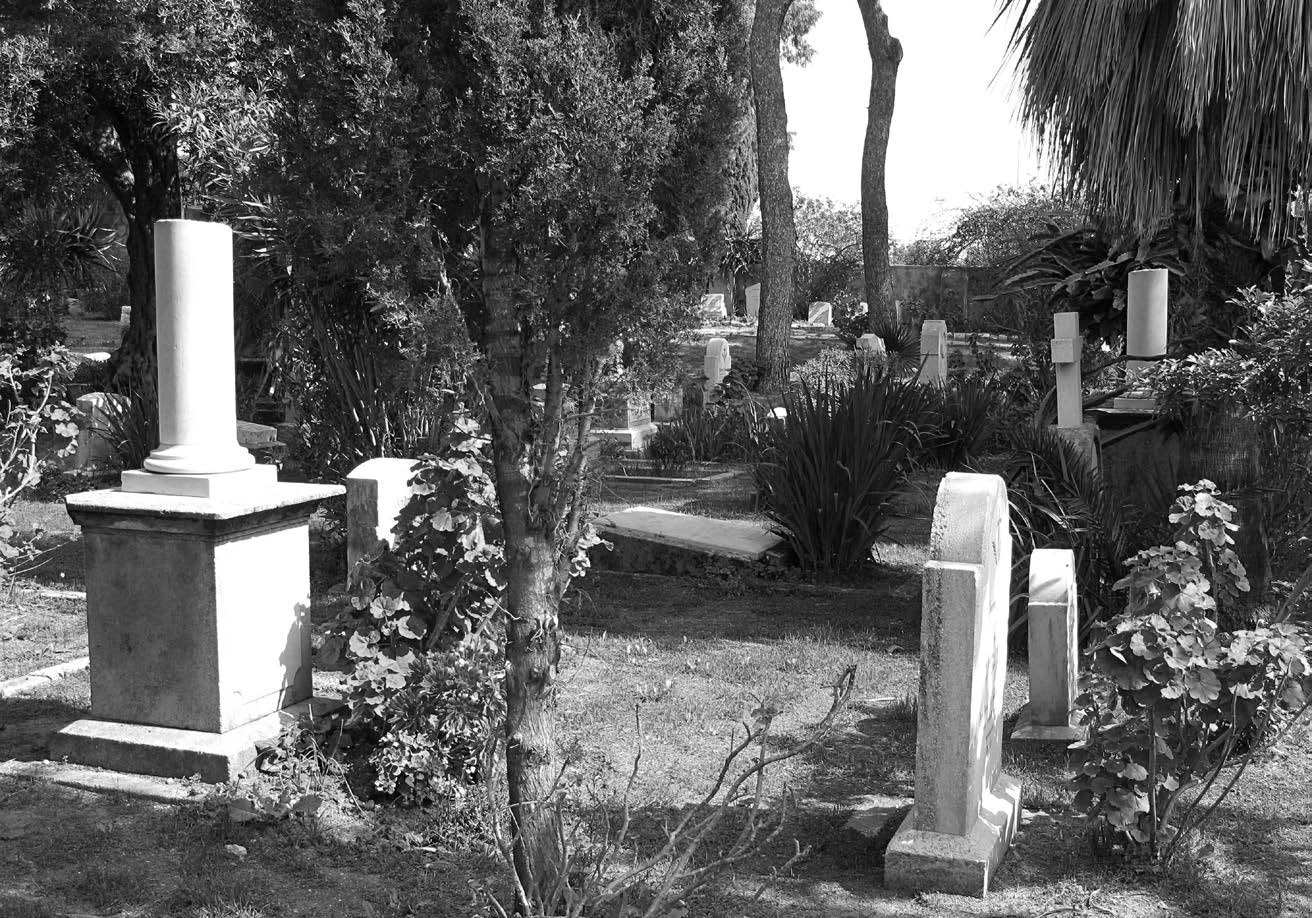The Haifa, Israel, Missionary Graves and the BYU Jerusalem Center
Kent P. Jackson
Kent P. Jackson, "The Haifa, Israel, Missionary Graves and the BYU Jerusalem Center," Religious Educator 22, no. 1 (2021): 161–67.
Kent P. Jackson (kentjackson49@outlook.com) was a professor emeritus of ancient scripture at BYU when this was written.
 The German Colony, at Haifa, Palestine, c. 1900–1920. Inhabited by German immigrants who hoped to build a “spiritual temple” through their righteous living, the colony became an early focus for Latter-day Saint missionaries. Two Utah missionaries and four German converts are buried in the colony’s cemetery.
The German Colony, at Haifa, Palestine, c. 1900–1920. Inhabited by German immigrants who hoped to build a “spiritual temple” through their righteous living, the colony became an early focus for Latter-day Saint missionaries. Two Utah missionaries and four German converts are buried in the colony’s cemetery.
Many Latter-day Saints have heard the story that graves of Latter-day Saint missionaries who died and were buried in Haifa, Israel, made possible Brigham Young University’s Jerusalem Center for Near Eastern Studies. The story goes like this: The graves of missionaries who died in the 1890s provided evidence of a Latter-day Saint presence in the Holy Land before the creation of the State of Israel in 1948, which evidence was required for the Church to be recognized in Israel and/
The story is not true.
Recognition for the Church
The first Latter-day Saint visitor to the Holy Land was Elder Orson Hyde of the Quorum of the Twelve Apostles, who in October 1841 traveled to Jerusalem and dedicated the land “for the gathering together of Judah’s scattered remnants.”[1] Other visits of Church leaders followed, often including prayers and dedications in behalf of the land and its inhabitants.[2]
The first continuous Latter-day Saint presence began in August 1886, when a missionary, Elder Jacob Spori, arrived in the port town of Haifa to preach the gospel and establish the Church there. Spori had been sent to Haifa to introduce the Restoration to a group of a few hundred German immigrants who had founded a religious colony next to the town. Their organization, the Temple Society, began in Germany with the intent of preparing a righteous people for the Second Coming of Jesus. Colonists from the group were in Palestine to redeem the land through faith and righteous works.[3]
 The Mount of Olives in Jerusalem, site of Orson Hyde’s dedication of the Holy Land. On the far left is the BYU Jerusalem Center. Center-right is the Orson Hyde Memorial Garden, which commemorates that dedication.
The Mount of Olives in Jerusalem, site of Orson Hyde’s dedication of the Holy Land. On the far left is the BYU Jerusalem Center. Center-right is the Orson Hyde Memorial Garden, which commemorates that dedication.
Shortly after his arrival, Spori converted a man by the name of Georg Grau, whose baptism made him the first Latter-day Saint convert in the Holy Land.[4] Georg’s wife, Magdalena, joined the Church a month later. She died in 1888 and was buried in Haifa’s German Colony cemetery. Georg was buried there in 1901. A missionary from Utah, Elder Adolf Haag, died in Haifa in 1892 and was buried there also, as was another Utah missionary, Elder John A. Clark, who died in 1895.[5] Over time, about twenty German colonists joined the Church. Most emigrated to America, but two other converts died in Haifa and were buried in the German cemetery: Friedrich August Kegel, who died in 1889, and Christiane Kegel, who died in 1899. The headstones of these six Latter-day Saints still stand in the cemetery today.[6]
Beginning with Georg Grau’s baptism in 1886, there were Latter-day Saints in Haifa off and on until the 1930s. During that time, several missionaries served there. On two occasions, 1927–28 and 1933–35, Haifa was the headquarters city of Latter-day Saint missionary work in the Middle East, and the Church had mission homes in the town’s German Colony area, not far from where Georg Grau had once lived.[7]
By the early 1970s there was a small, but continuous, Latter-day Saint presence in Jerusalem and in the State of Israel. That presence included diplomats, business people, and students at Israeli universities.[8] In 1972 President Harold B. Lee established the Jerusalem Branch of the Church, with David B. Galbraith as branch president.[9] The largest contributor of Latter-day Saints in Jerusalem was a BYU study abroad program that brought faculty and students to the Holy Land on a temporary basis.
In the mid-1970s Church leaders understood the need to have some kind of formal legal presence in Israel within which it could conduct its temporal activities, just as is necessary in other countries.[10] A legal presence would facilitate activities such as the opening of bank accounts, the transfer of money, and the purchase of property, including for a possible permanent home for the Jerusalem Branch and the BYU program. Galbraith, who was also resident director of the BYU program, set out to obtain the required recognition.
The highest form of government recognition of a Christian church was held only by groups with lengthy histories in the Holy Land, such as the Roman Catholic Church and the Greek Orthodox Church. As relative newcomers, Latter-day Saints had little chance of joining that group, but the Church’s Israeli attorney encouraged Galbraith to look into the possibility. He and others researched whether there was evidence of Church ownership of the two mission homes in Haifa, but no such evidence was found because the Church had only rented the buildings. The graves of the two missionaries and other Latter-day Saints, however, were evidence of a Latter-day Saint presence as early as the 1880s.
As it turned out, obtaining recognition as a church was not necessary after all. For the Latter-day Saints’ purposes, obtaining recognition as a nonprofit organization was sufficient, and that was the recognition the Church sought and obtained. For that, Church officials did not need the evidence of the graves or the early history in the Holy Land, and they did not include mention of them in the applications.
The BYU Jerusalem Center
 Brigham Young University Jerusalem Center for Near Eastern Studies
Brigham Young University Jerusalem Center for Near Eastern Studies
In 1979 President Spencer W. Kimball announced that the Church would construct a building in Jerusalem. It would provide a meeting place for the Jerusalem Branch, and it would house BYU’s study abroad program. The BYU program had been in operation there since 1968, and a permanent facility for it was needed.[11] For some, the news was not welcome. Latter-day Saints are known as missionary-minded people who take seriously Jesus’s injunction to go “into all the world, and preach the gospel to every creature” (Mark 16:15). After approval had been granted to build the Jerusalem Center and construction had begun, some in America and Israel became worried that a large Latter-day Saint building would become a base for missionary operations targeting Jews. Protests began, and they lasted for a few years while construction was under way.[12]
Obtaining legal permission to build and occupy the Jerusalem Center was a separate matter from the Church’s earlier efforts to be recognized as a nonprofit organization. Again, the Haifa graves and the Church’s early presence in the land played no role during the process of receiving the approvals for the building.[13]
The Story
So how did the story begin about the Haifa missionary graves being instrumental in making the Jerusalem Center possible?
 German Colony cemetery, Haifa, Israel. The grave marker of Elder Adolf Haag is on the left. On the far right, under the palm tree, is the matching grave marker of Elder John A. Clark.
German Colony cemetery, Haifa, Israel. The grave marker of Elder Adolf Haag is on the left. On the far right, under the palm tree, is the matching grave marker of Elder John A. Clark.
Most likely, during the early explorations into obtaining legal recognition for the Church, it became known that there was a search for an early Latter-day Saint presence in the Holy Land that would strengthen the case. The story was then attached to the building of the Jerusalem Center. I first heard the story in the 1980s and, like others, found it to be a faith-promoting narrative. If it were true, it would be further evidence of God’s hand at work, and it would provide added meaning to the tragic history of two faithful missionaries who died thousands of miles from their homes and families.
That the story is not accurate takes nothing away from the experience of the early Latter-day Saints in the Holy Land, nor from the service of the early missionaries there. Elder Haag was in Haifa only five weeks before succumbing to typhus, and Elder Clarke died of smallpox about six months after his arrival there.[14] Their sacrifices are an inspiration to all who visit their resting places.
The story of their graves and the Jerusalem Center has been passed on, and unfortunately continues to be passed on, by tour directors, tourists, teachers, and others. In the meantime, the graves in the Haifa German cemetery stand as monuments to the conversion of honorable people to the message of the Restoration, and to the labors of faithful Latter-day Saint missionaries who gave their lives in the service of God.
Notes
[1] Orson Hyde, “Interesting News from Alexandria and Jerusalem,” Times and Seasons, April 1, 1842, 740; David M. Whitchurch, “Orson Hyde, the Holy Land, and Brigham Young University,” https://
[2] See Blair G. Van Dyke, “In the Footsteps of Orson Hyde: Subsequent Dedications of the Holy Land,” BYU Studies 47, no. 1 (2008): 57–93.
[3] See Alex Carmel, Ottoman Haifa: A History of Four Centuries under Turkish Rule, trans. Elias Friedman (London: I. B. Tauris, 2011), 87–113; Paul Sauer, The Holy Land Called: The Story of the Temple Society, trans. Gunhild Henley (Melbourne: Temple Society Australia, 1991), 17–42, 183–94; and Larry W. Draper and Kent P. Jackson, A Missionary’s Story: The Letters and Journals of Adolf Haag, Mormon Missionary to Switzerland and Palestine, 1892 (Provo, UT: Religious Studies Center, Brigham Young University; and Gottlieb Schumacher Institute, University of Haifa; 2015), 79n74, 84n92.
[4] For the history of early missionary work in Haifa, see LaMar C. Berrett and Blair G. Van Dyke, Holy Lands: A History of the Latter-day Saints in the Near East (American Fork, UT: Covenant, 2005), 37–119.
[5] Draper and Jackson, A Missionary’s Story, contains Haag’s missionary letters and diaries; see also Daniel J. Pingree, “‘And Your Name Will Be Remembered . . .’: The History of John Alexander Clark’s Turkish Mission,” Thetean 24 (1995): 31–50.
[6] The cemetery is located behind (north of) the British war cemetery on Jaffa Road (Highway 4), just east of Rothchild Street/
[7] Both buildings are still standing. The first mission home is on the southeast corner of the intersection of Ben Gurion and Allenby Streets. The second is at 25 Ha-Ganim Street, on the southeast corner of the intersection of Ha-Ganim and Mordechai Anielewicz Streets. Berrett and Van Dyke, Holy Lands, 227, 268–69.
[8] Berrett and Van Dyke, Holy Lands, 309–10, 317, 336–39, 347–49; Kahlile B. Mehr, “Brigham Young University and Jerusalem before Semester Abroad, 1931–1968,” The Religious Educator 8, no. 1 (2007): 69–84.
[9] Berrett and Van Dyke, Holy Lands, 371–72.
[10] This account is based on Galbraith’s recollections in David B. Galbraith and Blair G. Van Dyke, “The Jerusalem Center for Near Eastern Studies: Reflections of a Modern Pioneer,” Religious Educator 9, no. 1 (2008): 34–36, and on my conversations with Galbraith in 2014 and 2020 and with Jerusalem Center administrator James R. Kearl in 2014 and 2020.
[11] Berrett and Van Dyke, Holy Lands, 355–412.
[12] See Amber Taylor, “Contest and Controversy in the Creation of the Brigham Young University Jerusalem Center,” dissertation, Brandeis University, 2019, 70–236.
[13] Since the 1970s and 1980s, legal requirements in Israel have changed, and both the Church and the Jerusalem Center now operate under different laws than those under which they first obtained legal status. Both are still recognized as separate nonprofit entities.
[14] Draper and Jackson, A Missionary’s Story, 249–73; Pingree, “History of John Alexander Clark’s Turkish Mission,” 31–50.
